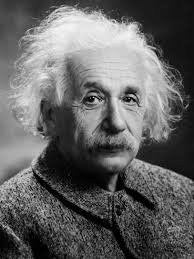The Theory of Relativity: A Journey Through Space and Time
The Theory of Relativity, proposed by Albert Einstein in the early 20th century, revolutionized our understanding of the universe. It consists of two main pillars: Special Relativity and General Relativity. Let’s delve into each of these theories to grasp their significance.

Special Relativity:
Einstein’s Special Theory of Relativity, published in 1905, fundamentally changed our concepts of space and time. At its core, it introduces two key principles:
The Principle of Relativity: The laws of physics are the same for all observers in uniform motion relative to each other. This means that there is no absolute frame of reference, and all motion is relative.
The Speed of Light Postulate: The speed of light in a vacuum is constant and is the same for all observers, regardless of their motion relative to the light source. This concept challenges our classical intuition about relative motion.
Special Relativity also gives rise to the famous equation E = mc2, where E is energy, mm is mass, and cc is the speed of light. This equation demonstrates the equivalence of mass and energy, revealing the immense energy contained within even small amounts of matter.
General Relativity:
Einstein’s General Theory of Relativity, published in 1915, expands upon the principles of Special Relativity to include gravity. It proposes that gravity is not a force as Newtonian physics suggests, but rather a curvature of spacetime caused by mass and energy.

In General Relativity:
Mass-Energy Curves Spacetime: Massive objects like stars and planets warp the fabric of spacetime around them. This curvature influences the paths of other objects, causing them to move along curved trajectories, which we perceive as gravitational attraction.
The Principle of Equivalence: There is no experiment that can distinguish between a gravitational force and acceleration. This principle is the basis for Einstein’s understanding of gravity as the curvature of spacetime.
General Relativity has made several predictions that have been confirmed through experiments and observations. One such prediction is the bending of light around massive objects, known as gravitational lensing.
Implications and Applications:
The Theory of Relativity has profound implications for our understanding of the cosmos, from the behavior of black holes to the expansion of the universe. It has also led to practical applications in technologies such as the Global Positioning System (GPS), where relativistic effects must be accounted for to achieve accurate results.
In conclusion, the Theory of Relativity stands as one of the most remarkable achievements of human intellect, reshaping our conception of space, time, and gravity. Its elegance and predictive power continue to inspire scientists and philosophers alike, inviting us to explore the depths of the universe with renewed curiosity and awe.

geniousnidhi.com
Nice
Chirag
Yes!!